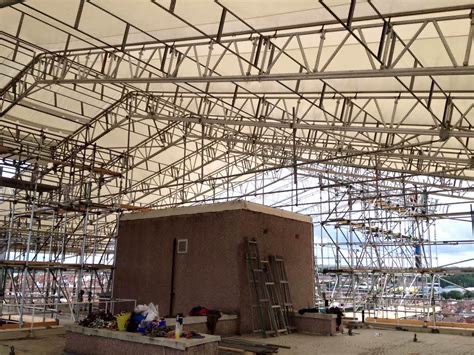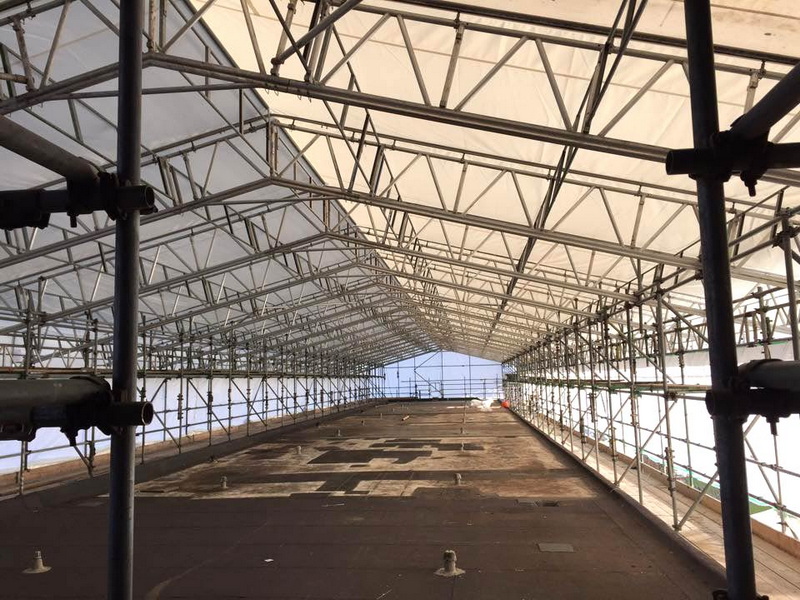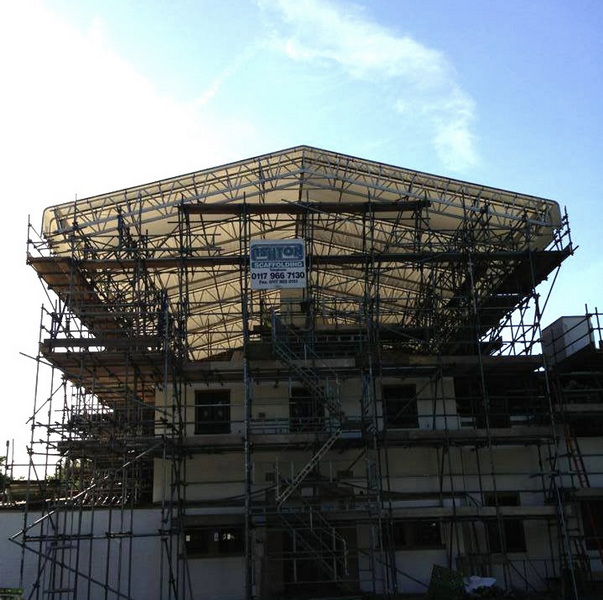Content Menu
● Introduction to Haki Scaffolding System
● Main Components of the Haki Scaffolding System
>> 1. Standards
>> 2. Ledgers
>> 3. Transoms
>> 4. Base Jacks (Adjustable Jacks)
>> 5. Braces (Diagonal and Horizontal)
>> 6. Guardrails and Handrails
>> 7. Decking and Platforms
>> 8. Couplers and Connectors
>> 9. Staircases and Access Systems
>> 10. Safety Gates and Entrance Steps
>> 11. Lattice Beams and Cantilever Brackets
● Materials Used in Haki Scaffolding Components
● How the Components Work Together
● Conclusion
● FAQ
>> 1. What materials are Haki scaffolding components made from?
>> 2. How do base jacks contribute to scaffold safety?
>> 3. Can Haki scaffolding be used for circular or suspended scaffolds?
>> 4. How are guardrails installed on a Haki scaffold?
>> 5. Are Haki scaffolding components interchangeable with other systems?
The Haki scaffolding system is renowned worldwide for its innovative design, ease of assembly, and robust safety features. It is widely used in construction, maintenance, and industrial projects due to its modularity, versatility, and durability. Understanding the main components of a Haki scaffolding system is crucial for anyone involved in erecting, inspecting, or using scaffolding to ensure safety and efficiency.

Introduction to Haki Scaffolding System
The Haki scaffolding system is a modular scaffolding solution manufactured primarily in Europe, using high-strength, hot-dip galvanized steel or aluminium. Its components are designed for rapid assembly and dismantling, with a focus on safety and adaptability to various site conditions. The system is widely used in residential, commercial, and industrial projects due to its high load capacity and compliance with international safety standards.
Main Components of the Haki Scaffolding System
1. Standards
Standards are the vertical tubes or posts that form the backbone of the scaffolding structure. They support the entire scaffold and transfer loads to the ground or base plates.
- Manufactured from hot-dip galvanized steel or aluminium.
- Feature regularly spaced holes or pockets (usually every 500mm) for connecting ledgers and braces.
- Available in various lengths to accommodate scaffold height requirements.
- Designed to be strong enough to support heavy loads, including workers, tools, and materials.
2. Ledgers
Ledgers are horizontal tubes that connect the standards together, providing lateral support and forming the framework for platforms.
- Connect to standards via a unique “hook-on” system or locking pins.
- Available as single ledgers or double ledgers for added strength.
- Help maintain the scaffold's shape and stability.
- Can be installed at different heights depending on platform levels.
3. Transoms
Transoms are horizontal cross members that span between ledgers, supporting the working platforms or decks.
- Provide direct support for scaffold boards or steel decks.
- Designed to fit securely into ledger pockets or brackets.
- Available in various lengths and materials (steel or aluminium).
- Critical for distributing loads evenly across the scaffold.
4. Base Jacks (Adjustable Jacks)
The base jack is the adjustable component at the bottom of the scaffold, allowing for leveling on uneven ground.
- Provides height adjustment (typically up to 550mm) to ensure a level scaffold base.
- Supports the weight of the entire scaffold.
- Usually fitted with a base plate or sole board to distribute load and prevent sinking.
- Made from durable, hot-dip galvanized steel.
5. Braces (Diagonal and Horizontal)
Braces provide rigidity and prevent the scaffold from swaying or collapsing.
- Diagonal braces connect standards and ledgers at an angle to resist lateral forces.
- Horizontal braces provide additional support between standards.
- Installed using locking pins or couplers.
- Essential for maintaining scaffold stability under load and wind pressure.

6. Guardrails and Handrails
Guardrails are installed on open edges of the scaffold platforms to prevent falls.
- Comprise horizontal rails fixed between vertical posts.
- Usually include a top rail, mid rail, and toe board.
- Designed to meet safety regulations and standards.
- Handrails are attached to staircases or access points for additional safety.
7. Decking and Platforms
The working platforms or decks provide the surface on which workers stand and place tools.
- Made from steel, aluminium, or timber.
- Steel and aluminium decks often feature anti-slip surfaces.
- Platforms can include access hatches for safe movement between levels.
- Designed to lock securely onto transoms or ledger beams.
8. Couplers and Connectors
Couplers are fittings used to join scaffolding tubes where modular components are not used.
- Include right-angle couplers, swivel couplers, and sleeve couplers.
- Provide flexibility in connecting tubes at various angles.
- Made from high-strength steel with corrosion-resistant coatings.
- Essential for custom scaffold configurations or repairs.
9. Staircases and Access Systems
Haki scaffolding systems often incorporate stair flights or ladders for safe vertical access.
- Staircases are modular and can be integrated into the scaffold structure.
- Include handrails and non-slip treads.
- Designed to comply with safety standards for access and egress.
- Allow safe and efficient movement of workers and materials.
10. Safety Gates and Entrance Steps
Safety gates are installed at scaffold entry points to prevent accidental falls.
- Typically fitted at the top or bottom of staircases.
- Swing gates with self-closing mechanisms.
- Entrance steps provide safe access from the ground to the scaffold platform.
11. Lattice Beams and Cantilever Brackets
For specialized applications, lattice beams and cantilever brackets extend the scaffold beyond the main structure.
- Lattice beams provide longer spans without additional supports.
- Cantilever brackets allow platforms to extend around obstacles or building features.
- Both components are designed to maintain scaffold stability and load capacity.
Materials Used in Haki Scaffolding Components
- Hot-dip galvanized steel: Provides excellent corrosion resistance and durability.
- Aluminium: Lightweight and corrosion-resistant, ideal for ease of handling and transport.
- Components are manufactured to strict European standards ensuring high quality.
How the Components Work Together
The Haki scaffolding system's components are designed to interlock and integrate seamlessly, creating a strong, stable, and safe structure. The standards form the vertical framework, connected by ledgers and transoms to create bays. Braces reinforce the structure against lateral forces, while decking provides a secure working surface. Guardrails and access systems ensure worker safety. Base jacks level the scaffold on uneven terrain, and specialized components like lattice beams allow for complex configurations.
Conclusion
Understanding the main components of a Haki scaffolding system is essential for safe and efficient scaffold erection and use. From the vertical standards and horizontal ledgers to the critical safety features like guardrails and access staircases, each part plays a vital role in the scaffold's overall performance. Manufactured from durable materials and designed for modularity, Haki scaffolding systems provide versatile solutions for a wide range of construction and maintenance projects. Proper knowledge of these components ensures that users can erect, inspect, and maintain scaffolds safely and effectively.

FAQ
1. What materials are Haki scaffolding components made from?
Haki scaffolding components are primarily made from hot-dip galvanized high-strength steel or aluminium, providing durability and corrosion resistance.
2. How do base jacks contribute to scaffold safety?
Base jacks allow for height adjustment to level the scaffold on uneven ground, ensuring stability and preventing structural imbalance.
3. Can Haki scaffolding be used for circular or suspended scaffolds?
Yes, Haki offers specialized components like lattice beams and suspension devices to build circular and suspended scaffolds safely.
4. How are guardrails installed on a Haki scaffold?
Guardrails are hooked or locked onto the scaffold's vertical posts and horizontal ledgers, surrounding platforms to prevent falls.
5. Are Haki scaffolding components interchangeable with other systems?
While some components may be compatible, Haki systems are designed as integrated modular units, and mixing with other systems is generally not recommended without expert consultation.






















